0 Comentários
0 Compartilhamentos
17 Visualizações

Diretório
สำราวจพัทยาโซเชียล สังคมออนไลน์ของพัทยาและพื้นที่ใกล้เคียง
-
Faça Login para curtir, compartilhar e comentar!
-
 WWW.PATTAYAMAIL.COMForeign tourists call for enhanced street safety in Pattaya after mob attack incidentAll suspects have confessed, saying they believed the foreigner had harmed one of their girlfriends and acted to intervene, which escalated into a violent assault. Authorities have pressed charges, recorded the suspects’ criminal records, and transferred them to investigators for further legal action. PATTAYA, Thailand – A troubling incident on Soi Buakhao, where a Swedish tourist was attacked by a group of locals, has reignited concerns about public safety in one of Thailand’s most popular beach cities. The altercation began with a dispute between the man and a Thai woman, which escalated when five individuals allegedly joined in, kicking and assaulting the man while he was on the ground. All those involved have confessed to the assault, claiming it was a misunderstanding. They said they believed the foreigner had harmed one of their girlfriends and stepped in to intervene—leading to the violent confrontation. Authorities have pressed charges and documented the criminal histories of the suspects. The individuals were handed over to investigators for further legal proceedings. While the exact details remain under review, the incident has sparked alarm among tourists and long-term visitors. Many are calling for stronger police presence and better street safety in areas frequented by both locals and foreigners. “This was absolutely disgusting,” one tourist commented. “Cowardly group fights should never be tolerated. I hope police take stronger action going forward.” Others acknowledged cultural sensitivities but emphasized the need for peaceful coexistence and mutual respect. “Pattaya is a great family-friendly beach city, but incidents like this damage its reputation and could deter future visitors,” another commenter noted. Several visitors also highlighted the importance of clear rules and proactive policing to prevent minor disputes from escalating into violence. “Respecting Thai culture is essential, but safety must always come first.” Some expats and residents advised tourists to remain calm in public disagreements, noting that locals often step in to defend one another. However, most agreed that violence is never justified and called for efforts to promote better understanding between tourists and locals. Many residents and foreign visitors alike agree: if a stronger police presence is needed to preserve Pattaya’s reputation as the “Land of Smiles,” then so be it. A well-trained, visible police force not only deters violence but also supports the city’s tourism-driven economy and long-term appeal. Expats have also voiced concerns about safety after dark, particularly around nightlife-heavy areas like Soi Buakhao. “Are there enough police patrols late at night?” one asked, reflecting a shared desire for increased vigilance during peak evening hours. “Pattaya is not a lawless city,” an official stressed. “Whether Thai or foreign, anyone who disturbs public peace will be brought to justice.” Anyone witnessing violence or possessing useful information is encouraged to contact local authorities via 191 or 082-7999-111. (Photos by Pattaya Police Station)0 Comentários 0 Compartilhamentos 3 Visualizações
WWW.PATTAYAMAIL.COMForeign tourists call for enhanced street safety in Pattaya after mob attack incidentAll suspects have confessed, saying they believed the foreigner had harmed one of their girlfriends and acted to intervene, which escalated into a violent assault. Authorities have pressed charges, recorded the suspects’ criminal records, and transferred them to investigators for further legal action. PATTAYA, Thailand – A troubling incident on Soi Buakhao, where a Swedish tourist was attacked by a group of locals, has reignited concerns about public safety in one of Thailand’s most popular beach cities. The altercation began with a dispute between the man and a Thai woman, which escalated when five individuals allegedly joined in, kicking and assaulting the man while he was on the ground. All those involved have confessed to the assault, claiming it was a misunderstanding. They said they believed the foreigner had harmed one of their girlfriends and stepped in to intervene—leading to the violent confrontation. Authorities have pressed charges and documented the criminal histories of the suspects. The individuals were handed over to investigators for further legal proceedings. While the exact details remain under review, the incident has sparked alarm among tourists and long-term visitors. Many are calling for stronger police presence and better street safety in areas frequented by both locals and foreigners. “This was absolutely disgusting,” one tourist commented. “Cowardly group fights should never be tolerated. I hope police take stronger action going forward.” Others acknowledged cultural sensitivities but emphasized the need for peaceful coexistence and mutual respect. “Pattaya is a great family-friendly beach city, but incidents like this damage its reputation and could deter future visitors,” another commenter noted. Several visitors also highlighted the importance of clear rules and proactive policing to prevent minor disputes from escalating into violence. “Respecting Thai culture is essential, but safety must always come first.” Some expats and residents advised tourists to remain calm in public disagreements, noting that locals often step in to defend one another. However, most agreed that violence is never justified and called for efforts to promote better understanding between tourists and locals. Many residents and foreign visitors alike agree: if a stronger police presence is needed to preserve Pattaya’s reputation as the “Land of Smiles,” then so be it. A well-trained, visible police force not only deters violence but also supports the city’s tourism-driven economy and long-term appeal. Expats have also voiced concerns about safety after dark, particularly around nightlife-heavy areas like Soi Buakhao. “Are there enough police patrols late at night?” one asked, reflecting a shared desire for increased vigilance during peak evening hours. “Pattaya is not a lawless city,” an official stressed. “Whether Thai or foreign, anyone who disturbs public peace will be brought to justice.” Anyone witnessing violence or possessing useful information is encouraged to contact local authorities via 191 or 082-7999-111. (Photos by Pattaya Police Station)0 Comentários 0 Compartilhamentos 3 Visualizações -
 WWW.PATTAYAMAIL.COMIt was a musical and informative morning at the Pattaya City Expats ClubYves Baron sings “It’s Now or Never” to the enjoyment of his PCEC audience. Yves entertained with several songs as he discussed the similarity between sports and music. PATTAYA, Thailand – On Wednesday, 25 June 2025, the Pattaya City Expats Club (PCEC) was treated to an insightful presentation by Yves Baron as well as several songs. This was followed by Nathan Butler who also provided some songs as he encouraged his audience to attend his upcoming charity concert to raise funds for Take Care Kids Foundation. Yves, a well-known figure in both the sports and music worlds, captivated the audience with his unique perspective on the intersection of these two fields. Yves began his presentation by introducing the themes of sports and music, emphasizing how they influence each other. He shared his personal experiences and insights, highlighting the importance of rhythm and repetition in both sports training and singing. Drawing parallels between athletes and musicians, Yves underscored the dedication and perseverance required to excel in both arenas. In addition to his commentary, Yves shared his performance schedule for the week, inviting the audience to participate in open mic sessions. He emphasized the importance of performing under pressure and shared a personal story about an unexpected performance in a fish market, illustrating the challenges faced by artists in unconventional settings. Yves concluded his presentation by discussing his comfort with singing in different languages, particularly French, and the challenges of singing in languages he is less familiar with. He highlighted the importance of language and cultural understanding in his performances. MC Amy Falken introduces Nathan Butler to announce his upcoming charity concert for the Take Care Kids Foundation and to provide some songs for his PCEC audience. Nathan, an Australian musician who has lived in Thailand for 18 years, shared insights into his musical journey, upcoming charity gigs, and performed original songs. Nathan, who is part of a two-piece band, spoke passionately about his experiences in Thailand and his dedication to music. He highlighted the importance of community support and involvement, emphasizing that his charity event aims to create a positive atmosphere while supporting children without parents. Nathan also discussed his plans for future events and collaborations with local sponsors and charities. During the presentation, Nathan performed original songs, including “Don’t Worry” and “The Blues Ain’t Nothing,” showcasing his unique musical style. He shared his learning experiences with guitar and the influence of blues music, underscoring the significance of practice and timing in his musical journey. Following the presentations, MC Amy Falken conducted the Open Forum where audience members can ask questions or make comments about Expat living in Thailand. To view videos of the presentations, visit the PCEC’s YouTube channel at https://www.youtube.com/watch?v=9P1HhZ7SvDU for Yves and https://www.youtube.com/watch?v=U_Y53mPJPT8 for Nathan. To learn more about the PCEC, visit their website at www.pcec.club.0 Comentários 0 Compartilhamentos 3 Visualizações
WWW.PATTAYAMAIL.COMIt was a musical and informative morning at the Pattaya City Expats ClubYves Baron sings “It’s Now or Never” to the enjoyment of his PCEC audience. Yves entertained with several songs as he discussed the similarity between sports and music. PATTAYA, Thailand – On Wednesday, 25 June 2025, the Pattaya City Expats Club (PCEC) was treated to an insightful presentation by Yves Baron as well as several songs. This was followed by Nathan Butler who also provided some songs as he encouraged his audience to attend his upcoming charity concert to raise funds for Take Care Kids Foundation. Yves, a well-known figure in both the sports and music worlds, captivated the audience with his unique perspective on the intersection of these two fields. Yves began his presentation by introducing the themes of sports and music, emphasizing how they influence each other. He shared his personal experiences and insights, highlighting the importance of rhythm and repetition in both sports training and singing. Drawing parallels between athletes and musicians, Yves underscored the dedication and perseverance required to excel in both arenas. In addition to his commentary, Yves shared his performance schedule for the week, inviting the audience to participate in open mic sessions. He emphasized the importance of performing under pressure and shared a personal story about an unexpected performance in a fish market, illustrating the challenges faced by artists in unconventional settings. Yves concluded his presentation by discussing his comfort with singing in different languages, particularly French, and the challenges of singing in languages he is less familiar with. He highlighted the importance of language and cultural understanding in his performances. MC Amy Falken introduces Nathan Butler to announce his upcoming charity concert for the Take Care Kids Foundation and to provide some songs for his PCEC audience. Nathan, an Australian musician who has lived in Thailand for 18 years, shared insights into his musical journey, upcoming charity gigs, and performed original songs. Nathan, who is part of a two-piece band, spoke passionately about his experiences in Thailand and his dedication to music. He highlighted the importance of community support and involvement, emphasizing that his charity event aims to create a positive atmosphere while supporting children without parents. Nathan also discussed his plans for future events and collaborations with local sponsors and charities. During the presentation, Nathan performed original songs, including “Don’t Worry” and “The Blues Ain’t Nothing,” showcasing his unique musical style. He shared his learning experiences with guitar and the influence of blues music, underscoring the significance of practice and timing in his musical journey. Following the presentations, MC Amy Falken conducted the Open Forum where audience members can ask questions or make comments about Expat living in Thailand. To view videos of the presentations, visit the PCEC’s YouTube channel at https://www.youtube.com/watch?v=9P1HhZ7SvDU for Yves and https://www.youtube.com/watch?v=U_Y53mPJPT8 for Nathan. To learn more about the PCEC, visit their website at www.pcec.club.0 Comentários 0 Compartilhamentos 3 Visualizações -
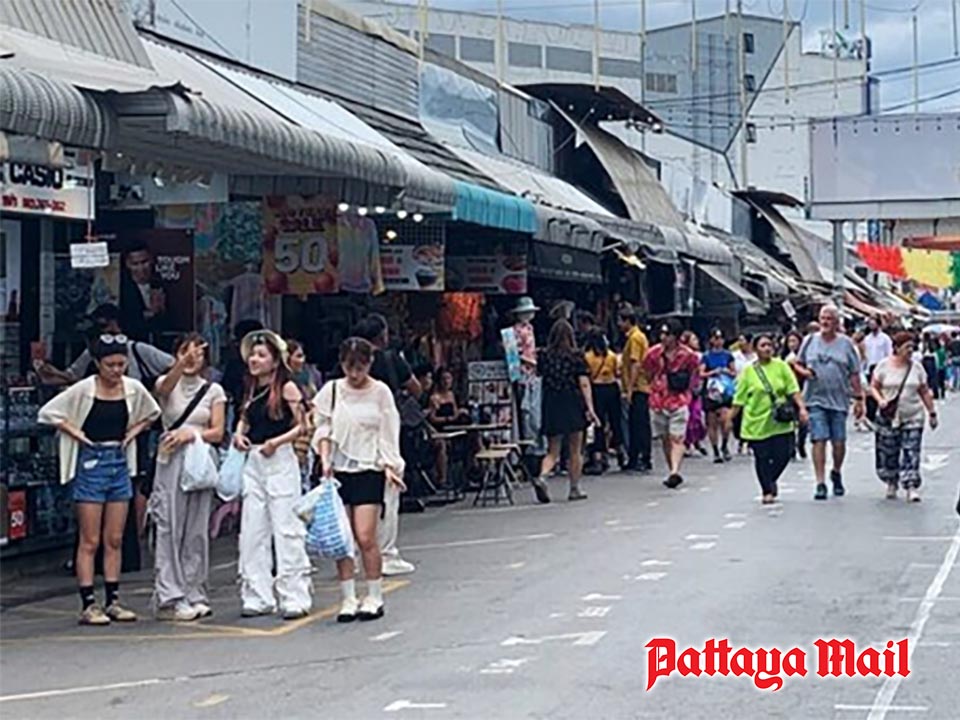 WWW.PATTAYAMAIL.COMNobody spends like the Chinese: as Bangkok’s biggest market feels the drop, can Pattaya stay afloat?Bangkok’s iconic Chatuchak Market feels the sting as Chinese tourist spending collapses. PATTAYA, Thailand – As Thailand continues to battle economic headwinds and a shift in travel patterns, even Bangkok’s iconic Chatuchak Weekend Market — one of the largest outdoor markets in the world — is feeling the pinch. Vendors report that Chinese tourist numbers, once their biggest customer base, have dropped sharply in recent months. Sales for many stalls are down by 50%, despite a steady stream of visitors from India, Vietnam, and Europe. “I’ve been here for years and I’ve never seen it this quiet in terms of real buying,” said Saowalak (alias), who sells handmade goods. “The Chinese used to order 10–20 packs per person, now it’s one or two, or sometimes nothing.” She notes that while foot traffic remains high, most visitors these days come to browse, snack, or take photos — not to shop. “Since the earthquake in April, things have gotten worse,” she added. Other vendors echo the sentiment. One souvenir shop owner said she used to bring in 100,000 baht a month or more. “Now I’m lucky to make 1,000 baht in a day — and sometimes, I make nothing,” she said. Despite the rise in Indian and Vietnamese tourists, their per-person spending is noticeably lower than the Chinese. High monthly rent (ranging from 6,000 to over 10,000 baht depending on the zone) only adds pressure to struggling stallholders. Meanwhile, new shops catering to international tastes — like balm, massage oils, and snacks — continue popping up. Mini-marts such as “Thailand 100 Baht Shop” now line several walkways, offering trendy cosmetics and gifts at prices that appeal to foreign visitors. But even with these innovations, entire alleys deeper in the market remain quiet, with shuttered stalls and “For Rent” signs multiplying. With sales down 50%, vendors wonder: can Pattaya weather the same storm? So if Bangkok’s most famous market is feeling the strain, what hope is there for Pattaya? The seaside resort town is similarly caught in the low-season slump, with far fewer Europeans flying in during the rainy months. Thai officials are trying to plug the gap by promoting domestic travel and welcoming growing regional markets like India — but questions remain whether this trade-off is working. While Indian and Vietnamese tourists may be arriving in larger numbers, some business owners in Pattaya quietly admit it’s not translating into meaningful sales. “They come, they look, they enjoy. But they don’t spend like the Chinese or long-stay Westerners used to,” one restaurant owner said. For now, Pattaya — like Chatuchak — is trying to evolve, welcoming new shopfronts, co-pay promotions, and food stalls aimed at different tourist tastes. But with rising operating costs, declining per-capita spending, and intense competition, survival in Thailand’s tourist cities may depend less on how many people come — and more on who’s still buying. From Bangkok to Pattaya, more tourists doesn’t always mean more money. Empty shopping bags, full walkways — Thailand’s markets face a spending drought.0 Comentários 0 Compartilhamentos 9 Visualizações
WWW.PATTAYAMAIL.COMNobody spends like the Chinese: as Bangkok’s biggest market feels the drop, can Pattaya stay afloat?Bangkok’s iconic Chatuchak Market feels the sting as Chinese tourist spending collapses. PATTAYA, Thailand – As Thailand continues to battle economic headwinds and a shift in travel patterns, even Bangkok’s iconic Chatuchak Weekend Market — one of the largest outdoor markets in the world — is feeling the pinch. Vendors report that Chinese tourist numbers, once their biggest customer base, have dropped sharply in recent months. Sales for many stalls are down by 50%, despite a steady stream of visitors from India, Vietnam, and Europe. “I’ve been here for years and I’ve never seen it this quiet in terms of real buying,” said Saowalak (alias), who sells handmade goods. “The Chinese used to order 10–20 packs per person, now it’s one or two, or sometimes nothing.” She notes that while foot traffic remains high, most visitors these days come to browse, snack, or take photos — not to shop. “Since the earthquake in April, things have gotten worse,” she added. Other vendors echo the sentiment. One souvenir shop owner said she used to bring in 100,000 baht a month or more. “Now I’m lucky to make 1,000 baht in a day — and sometimes, I make nothing,” she said. Despite the rise in Indian and Vietnamese tourists, their per-person spending is noticeably lower than the Chinese. High monthly rent (ranging from 6,000 to over 10,000 baht depending on the zone) only adds pressure to struggling stallholders. Meanwhile, new shops catering to international tastes — like balm, massage oils, and snacks — continue popping up. Mini-marts such as “Thailand 100 Baht Shop” now line several walkways, offering trendy cosmetics and gifts at prices that appeal to foreign visitors. But even with these innovations, entire alleys deeper in the market remain quiet, with shuttered stalls and “For Rent” signs multiplying. With sales down 50%, vendors wonder: can Pattaya weather the same storm? So if Bangkok’s most famous market is feeling the strain, what hope is there for Pattaya? The seaside resort town is similarly caught in the low-season slump, with far fewer Europeans flying in during the rainy months. Thai officials are trying to plug the gap by promoting domestic travel and welcoming growing regional markets like India — but questions remain whether this trade-off is working. While Indian and Vietnamese tourists may be arriving in larger numbers, some business owners in Pattaya quietly admit it’s not translating into meaningful sales. “They come, they look, they enjoy. But they don’t spend like the Chinese or long-stay Westerners used to,” one restaurant owner said. For now, Pattaya — like Chatuchak — is trying to evolve, welcoming new shopfronts, co-pay promotions, and food stalls aimed at different tourist tastes. But with rising operating costs, declining per-capita spending, and intense competition, survival in Thailand’s tourist cities may depend less on how many people come — and more on who’s still buying. From Bangkok to Pattaya, more tourists doesn’t always mean more money. Empty shopping bags, full walkways — Thailand’s markets face a spending drought.0 Comentários 0 Compartilhamentos 9 Visualizações -
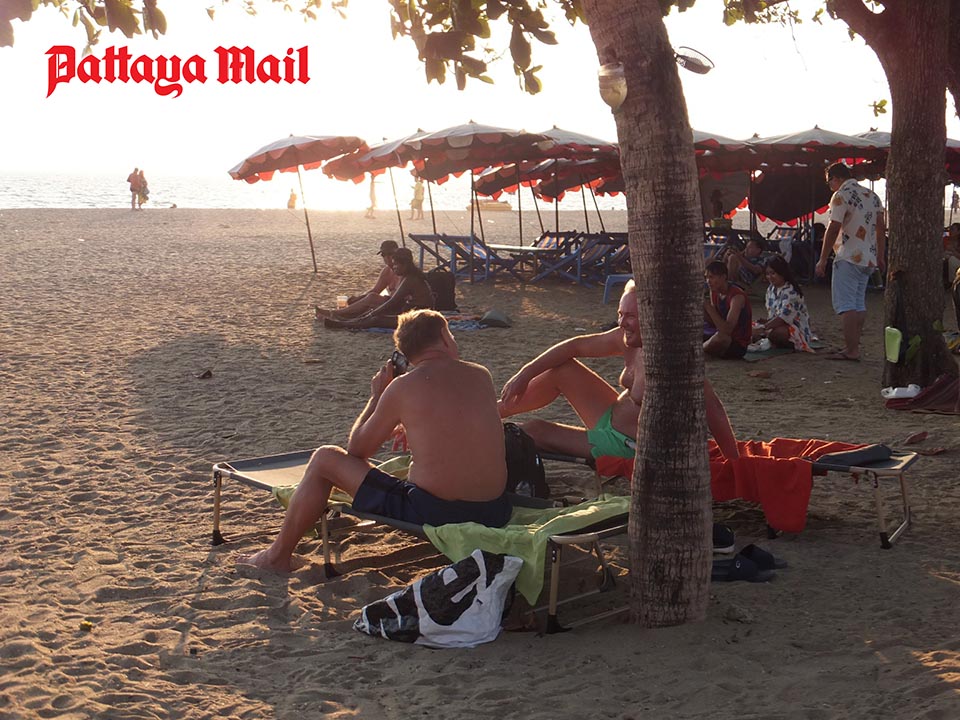 WWW.PATTAYAMAIL.COM24-hour alcohol sales approved for airports, entertainment venues, and hotelsNew 24-hour alcohol sales in key tourist spots aim to modernize Thailand’s hospitality scene. (Photo by Jetsada Homklin) PATTAYA, Thailand – Thailand has officially relaxed its alcohol sale laws in key tourist zones, a move welcomed by the hospitality and tourism industries as the country looks to make life easier for visitors in major travel hubs like Pattaya, Phuket, Chiang Mai, and Bangkok. According to a newly published announcement in the Royal Gazette from the Prime Minister’s Office, alcohol can now be sold around the clock in three types of locations: passenger service areas inside international airports, entertainment venues that are licensed under the Entertainment Act, and hotels registered under the Hotel Act. The revised regulation, signed by Prime Minister Paetongtarn Shinawatra, came into effect on June 27, 2025. This change replaces the more restrictive 2015 rules and follows recommendations from the National Alcohol Policy Committee. Officials said the update better aligns alcohol policy with today’s economic and social realities—particularly in support of Thailand’s tourism-driven economy and expanding service sector. In Pattaya, where nightlife is central to the city’s appeal, many see this as a long-overdue update. Bar owners and hotel operators have long argued that international travelers expect 24-hour access in appropriate venues, and that outdated regulations were costing the city valuable revenue. By removing barriers in regulated spaces such as airports, hotels, and entertainment districts, the government hopes to improve the visitor experience without sacrificing oversight. However, outside these exempted zones, alcohol sales across Thailand remain limited to the original hours of 11:00–14:00 and 17:00–24:00 daily. The policy shift comes at a time when Thailand is repositioning itself to attract high-value tourism and improve its competitiveness globally. The ability to access basic hospitality services like drinks at hotels or lounges without being caught in a confusing web of time restrictions is seen as a basic step toward modernizing the country’s image among international travelers. Thailand lifts alcohol sale restrictions at airports, hotels, and entertainment venues to boost tourism and convenience. Online reactions to the move were as animated as ever. “Haha… close weed shops and extend alcohol hours… that’s the goal of the Thai alcohol lobby!” one commenter joked. Others saw it as a long-expected change: “That 3-hour ‘official’ closure between 2 p.m. and 5 p.m. was ridiculous,” one said. “Exactly — I could bet it was already like that the last 5 years. Airport lounges, hotels, and entertainment venues always served alcohol anyway.” Still, not everyone was optimistic. “All weed shops are still open, so why issue a control announcement that changes nothing? Just confusing competition, nothing else,” a skeptical voice added. Another dryly remarked, “Thailand needs alcoholic tourists! LOL.” Some urged the government to look at the bigger picture. “We agree with easing alcohol laws — but the police need to actually enforce all laws. Otherwise, this is just another loophole.” Whatever the view, one thing is certain: Pattaya and other tourist cities are adapting to new realities, glass half-full or not.0 Comentários 0 Compartilhamentos 9 Visualizações
WWW.PATTAYAMAIL.COM24-hour alcohol sales approved for airports, entertainment venues, and hotelsNew 24-hour alcohol sales in key tourist spots aim to modernize Thailand’s hospitality scene. (Photo by Jetsada Homklin) PATTAYA, Thailand – Thailand has officially relaxed its alcohol sale laws in key tourist zones, a move welcomed by the hospitality and tourism industries as the country looks to make life easier for visitors in major travel hubs like Pattaya, Phuket, Chiang Mai, and Bangkok. According to a newly published announcement in the Royal Gazette from the Prime Minister’s Office, alcohol can now be sold around the clock in three types of locations: passenger service areas inside international airports, entertainment venues that are licensed under the Entertainment Act, and hotels registered under the Hotel Act. The revised regulation, signed by Prime Minister Paetongtarn Shinawatra, came into effect on June 27, 2025. This change replaces the more restrictive 2015 rules and follows recommendations from the National Alcohol Policy Committee. Officials said the update better aligns alcohol policy with today’s economic and social realities—particularly in support of Thailand’s tourism-driven economy and expanding service sector. In Pattaya, where nightlife is central to the city’s appeal, many see this as a long-overdue update. Bar owners and hotel operators have long argued that international travelers expect 24-hour access in appropriate venues, and that outdated regulations were costing the city valuable revenue. By removing barriers in regulated spaces such as airports, hotels, and entertainment districts, the government hopes to improve the visitor experience without sacrificing oversight. However, outside these exempted zones, alcohol sales across Thailand remain limited to the original hours of 11:00–14:00 and 17:00–24:00 daily. The policy shift comes at a time when Thailand is repositioning itself to attract high-value tourism and improve its competitiveness globally. The ability to access basic hospitality services like drinks at hotels or lounges without being caught in a confusing web of time restrictions is seen as a basic step toward modernizing the country’s image among international travelers. Thailand lifts alcohol sale restrictions at airports, hotels, and entertainment venues to boost tourism and convenience. Online reactions to the move were as animated as ever. “Haha… close weed shops and extend alcohol hours… that’s the goal of the Thai alcohol lobby!” one commenter joked. Others saw it as a long-expected change: “That 3-hour ‘official’ closure between 2 p.m. and 5 p.m. was ridiculous,” one said. “Exactly — I could bet it was already like that the last 5 years. Airport lounges, hotels, and entertainment venues always served alcohol anyway.” Still, not everyone was optimistic. “All weed shops are still open, so why issue a control announcement that changes nothing? Just confusing competition, nothing else,” a skeptical voice added. Another dryly remarked, “Thailand needs alcoholic tourists! LOL.” Some urged the government to look at the bigger picture. “We agree with easing alcohol laws — but the police need to actually enforce all laws. Otherwise, this is just another loophole.” Whatever the view, one thing is certain: Pattaya and other tourist cities are adapting to new realities, glass half-full or not.0 Comentários 0 Compartilhamentos 9 Visualizações -
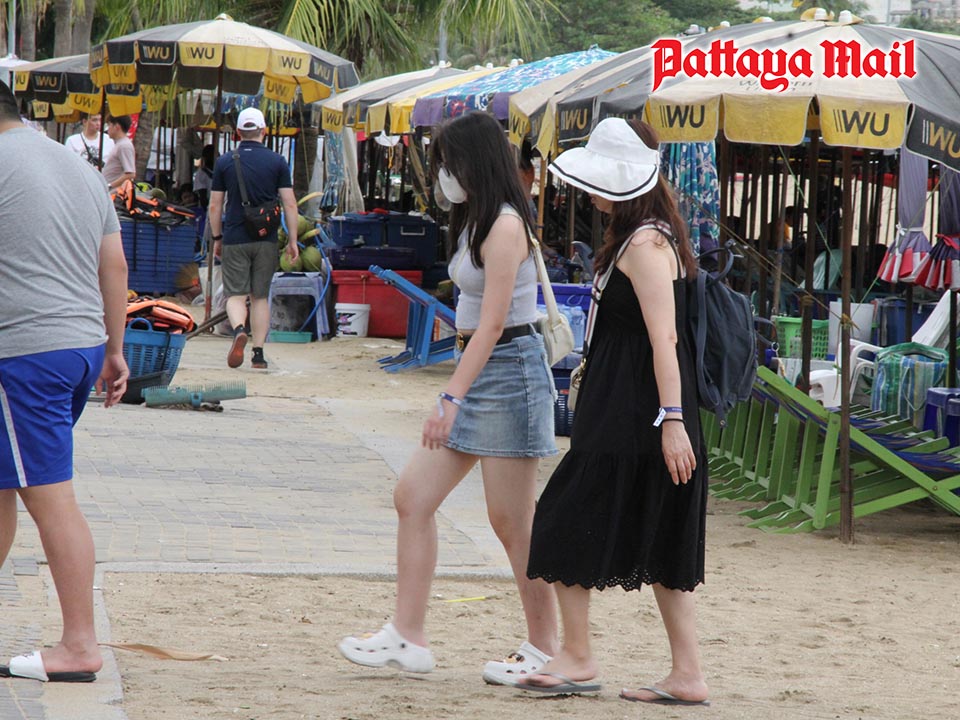 WWW.PATTAYAMAIL.COMPattaya counts on Thai and Indian tourists despite doubts over spending and social tensionsIndian, Chinese, and Malaysian tourists drive Pattaya’s recovery — but spending habits reveal a new tourism landscape. (Photo by Jetsada Homklin) PATTAYA, Thailand – As July rolls in, Pattaya’s tourism authorities are focusing on the domestic market through the ‘co-pay’ program. With fewer long-haul visitors arriving during the low season, Thai families on school break and regional travelers — including a growing number from the Indian subcontinent — are expected to fill the gap. However, not everyone is convinced this influx will deliver the kind of “holiday rush” the city needs. Online, skepticism is loud. “Holiday rush? Joke of the year,” one long-time visitor wrote, mocking optimistic headlines. “Where do they get it from — what rush? It’s empty. There is no rush in high season anymore, never mind low season.” While tourism agencies focus on visitor numbers, some foreign tourists argue the real issue is who is coming — and whether they contribute meaningfully to local businesses. “Pattaya doesn’t need more locals using government coupons when there are already hundreds of thousands here,” one business operator claimed. “What’s needed are Europeans, Americans, and Australians.” Others emphasize declining visitor spending, noting, “It’s spenders that matter, and the countries I mentioned spend far more per person.” But the numbers tell a different story. Indian, Chinese, and Malaysian travelers are now among the top sources of inbound tourism to Thailand. In sheer volume, they’re helping Pattaya stay afloat — even if their spending patterns differ. “July-August sales equals India,” one poster summarized bluntly. Still, cultural clashes and social friction are emerging. “Cruel… never again Pattaya!” wrote one disillusioned regular. “I was always in Thailand for the last 25 years, 2-3 times a year, but I’m avoiding Little India now.” Complaints range from behavior in public spaces to competition for space in restaurants and convenience stores. “Had to step way back to get into a queue,” one visitor recounted after an encounter at a 7-Eleven checkout. “They just won’t learn,” said another, highlighting tensions that extend beyond economics. July–August may bring numbers, but not everyone’s convinced the new wave of tourists will bring spending or stability. (Photo by Jetsada Homklin) The atmosphere online swings between blunt frustration and weary nostalgia. “It was a nice place back in 2000,” one man said. “Tree Town was near empty the other night. We’ll be lucky if we get a high season this year.” Still, not everyone is pessimistic. Some acknowledge that different groups serve different purposes: “Baht bus is cheap and convenient,” one comment reads — followed by a practical reminder, “just be aware of pickpockets.” Others argue the right pricing model can keep bars running even in a soft season. “Don’t be greedy — take a smaller profit, and at the end of the year you make more,” a bar owner offered. The broader point may be this: Pattaya is evolving. The debate between traditional Western visitors and the growing wave of regional tourists underscores a city caught between nostalgia and necessity. And while the July-August push for Thai and Indian arrivals might not bring back the beer bar buzz of 1999, it may help keep the lights on — for now. The only question is whether the peace that makes Pattaya appealing will survive the growing pains of a changing tourist base — or whether, as one skeptical poster warned, “The sub-continentals won’t save the place… if anything; they’ll have the opposite effect.”0 Comentários 0 Compartilhamentos 9 Visualizações
WWW.PATTAYAMAIL.COMPattaya counts on Thai and Indian tourists despite doubts over spending and social tensionsIndian, Chinese, and Malaysian tourists drive Pattaya’s recovery — but spending habits reveal a new tourism landscape. (Photo by Jetsada Homklin) PATTAYA, Thailand – As July rolls in, Pattaya’s tourism authorities are focusing on the domestic market through the ‘co-pay’ program. With fewer long-haul visitors arriving during the low season, Thai families on school break and regional travelers — including a growing number from the Indian subcontinent — are expected to fill the gap. However, not everyone is convinced this influx will deliver the kind of “holiday rush” the city needs. Online, skepticism is loud. “Holiday rush? Joke of the year,” one long-time visitor wrote, mocking optimistic headlines. “Where do they get it from — what rush? It’s empty. There is no rush in high season anymore, never mind low season.” While tourism agencies focus on visitor numbers, some foreign tourists argue the real issue is who is coming — and whether they contribute meaningfully to local businesses. “Pattaya doesn’t need more locals using government coupons when there are already hundreds of thousands here,” one business operator claimed. “What’s needed are Europeans, Americans, and Australians.” Others emphasize declining visitor spending, noting, “It’s spenders that matter, and the countries I mentioned spend far more per person.” But the numbers tell a different story. Indian, Chinese, and Malaysian travelers are now among the top sources of inbound tourism to Thailand. In sheer volume, they’re helping Pattaya stay afloat — even if their spending patterns differ. “July-August sales equals India,” one poster summarized bluntly. Still, cultural clashes and social friction are emerging. “Cruel… never again Pattaya!” wrote one disillusioned regular. “I was always in Thailand for the last 25 years, 2-3 times a year, but I’m avoiding Little India now.” Complaints range from behavior in public spaces to competition for space in restaurants and convenience stores. “Had to step way back to get into a queue,” one visitor recounted after an encounter at a 7-Eleven checkout. “They just won’t learn,” said another, highlighting tensions that extend beyond economics. July–August may bring numbers, but not everyone’s convinced the new wave of tourists will bring spending or stability. (Photo by Jetsada Homklin) The atmosphere online swings between blunt frustration and weary nostalgia. “It was a nice place back in 2000,” one man said. “Tree Town was near empty the other night. We’ll be lucky if we get a high season this year.” Still, not everyone is pessimistic. Some acknowledge that different groups serve different purposes: “Baht bus is cheap and convenient,” one comment reads — followed by a practical reminder, “just be aware of pickpockets.” Others argue the right pricing model can keep bars running even in a soft season. “Don’t be greedy — take a smaller profit, and at the end of the year you make more,” a bar owner offered. The broader point may be this: Pattaya is evolving. The debate between traditional Western visitors and the growing wave of regional tourists underscores a city caught between nostalgia and necessity. And while the July-August push for Thai and Indian arrivals might not bring back the beer bar buzz of 1999, it may help keep the lights on — for now. The only question is whether the peace that makes Pattaya appealing will survive the growing pains of a changing tourist base — or whether, as one skeptical poster warned, “The sub-continentals won’t save the place… if anything; they’ll have the opposite effect.”0 Comentários 0 Compartilhamentos 9 Visualizações -
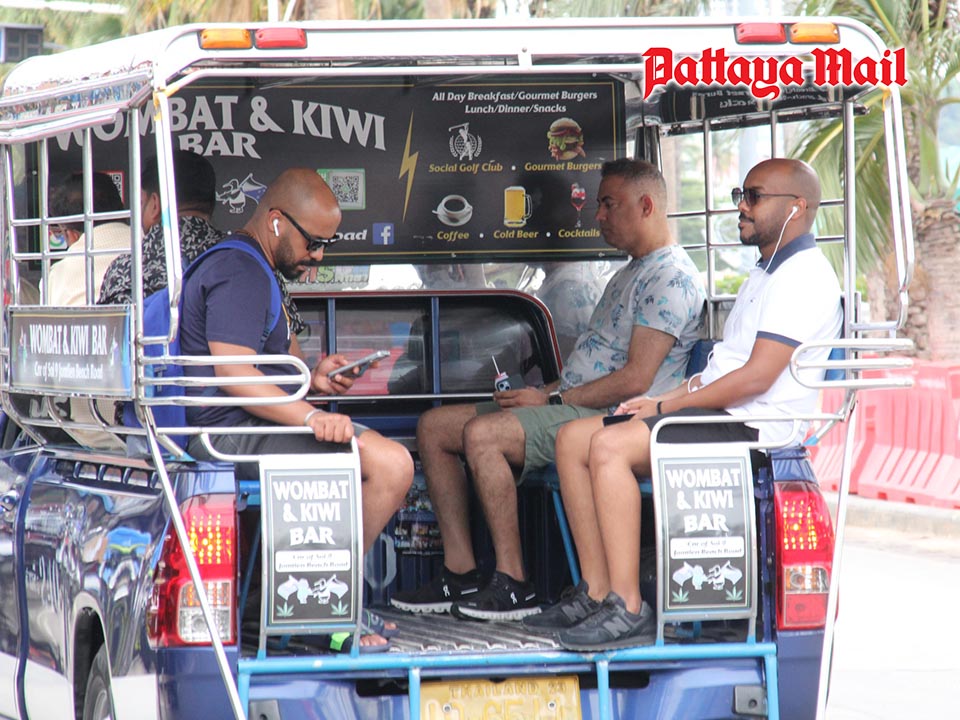 WWW.PATTAYAMAIL.COMBaht buses win over ride-hailing as tourists embrace Pattaya’s low-cost, fresh air, and breezy charmPattaya’s baht buses offer an affordable, breezy ride and a taste of local culture that ride-hailing apps can’t match. PATTAYA, Thailand – In Pattaya’s vibrant streets, the iconic baht bus continues to hold a special place in the hearts of expats and foreign tourists alike, outpacing ride-hailing services in popularity. For many visitors, the baht bus is not just affordable transportation—it’s a cultural experience, a chance to catch the ocean breeze, and a fun way to navigate the city’s bustling roads. “Baht ride is cheap and good! Just be aware of pickpockets on baht bus,” one expat cautions, reflecting a common tip among travelers. Another adds, “If I don’t drive a motorcycle, I go with baht bus! It’s also gratis for kids,” highlighting the family-friendly appeal of these open-sided songthaews. Several users praise the baht bus as an enjoyable, low-cost option. “Baht bus every time,” says one, while another insists, “Baht bus is a cultural experience and usually fun. Forget the ride-hailing, just increases traffic and pollution.” Yet others note practical downsides: “Baht bus is best if you’re not in a hurry, but with Pattaya’s traffic, they can be slower,” a reminder that ride-hailing apps sometimes offer quicker trips. Ride-hailing platforms like Bolt do have their fans, with some travelers using a mix of both: “I use both baht buses & Bolt for Pattaya transportation,” one shared. But many locals and expats prefer the traditional songthaews as their go-to ride. “Songtaew 10 THB is all the best all time,” enthuses another, summing up the affection for the classic transport. Ultimately, the choice comes down to experience versus convenience. Pattaya’s baht buses offer an affordable, breezy, and social ride that many find irreplaceable—while ride-hailing apps compete with speed and privacy. For tourists seeking authentic local flavor and a relaxed pace, the baht bus remains the preferred choice. Just be cautious when stepping in and out, as the stairs are quite high and hollow. It’s wise to firmly hold the hands of your children or elderly relatives to avoid slips or falls while boarding or disembarking.0 Comentários 0 Compartilhamentos 9 Visualizações
WWW.PATTAYAMAIL.COMBaht buses win over ride-hailing as tourists embrace Pattaya’s low-cost, fresh air, and breezy charmPattaya’s baht buses offer an affordable, breezy ride and a taste of local culture that ride-hailing apps can’t match. PATTAYA, Thailand – In Pattaya’s vibrant streets, the iconic baht bus continues to hold a special place in the hearts of expats and foreign tourists alike, outpacing ride-hailing services in popularity. For many visitors, the baht bus is not just affordable transportation—it’s a cultural experience, a chance to catch the ocean breeze, and a fun way to navigate the city’s bustling roads. “Baht ride is cheap and good! Just be aware of pickpockets on baht bus,” one expat cautions, reflecting a common tip among travelers. Another adds, “If I don’t drive a motorcycle, I go with baht bus! It’s also gratis for kids,” highlighting the family-friendly appeal of these open-sided songthaews. Several users praise the baht bus as an enjoyable, low-cost option. “Baht bus every time,” says one, while another insists, “Baht bus is a cultural experience and usually fun. Forget the ride-hailing, just increases traffic and pollution.” Yet others note practical downsides: “Baht bus is best if you’re not in a hurry, but with Pattaya’s traffic, they can be slower,” a reminder that ride-hailing apps sometimes offer quicker trips. Ride-hailing platforms like Bolt do have their fans, with some travelers using a mix of both: “I use both baht buses & Bolt for Pattaya transportation,” one shared. But many locals and expats prefer the traditional songthaews as their go-to ride. “Songtaew 10 THB is all the best all time,” enthuses another, summing up the affection for the classic transport. Ultimately, the choice comes down to experience versus convenience. Pattaya’s baht buses offer an affordable, breezy, and social ride that many find irreplaceable—while ride-hailing apps compete with speed and privacy. For tourists seeking authentic local flavor and a relaxed pace, the baht bus remains the preferred choice. Just be cautious when stepping in and out, as the stairs are quite high and hollow. It’s wise to firmly hold the hands of your children or elderly relatives to avoid slips or falls while boarding or disembarking.0 Comentários 0 Compartilhamentos 9 Visualizações -
 WWW.PATTAYAMAIL.COMCloudy, rainy, shiny — Pattaya has it all, and still enduresPattaya’s skies may shift from sunshine to storm, but its vibrant spirit shines through every weather change. (Photo by Jetsada Homklin) PATTAYA, Thailand – Pattaya, the coastal city that never quite slows down, continues to thrive no matter what the skies throw at it. One moment it’s sunshine glinting off the Gulf of Thailand, the next it’s a sudden downpour soaking beach umbrellas and street vendors alike. But rain or shine, Pattaya endures — and so do its people and visitors. As of July 1, the Thai Meteorological Department has issued a nationwide alert warning of heavy rainfall across much of upper Thailand, including the northern, northeastern, central, and eastern regions. Bangkok and surrounding provinces are expected to see thunderstorms in 70% of the area, with occasional heavy showers. Pattaya is not immune to the pattern. Located within the eastern region under alert, the city has seen intermittent bouts of sun, cloud, and torrential rain — sometimes all in the same afternoon. Yet this meteorological unpredictability hasn’t stopped locals from heading to markets or tourists from jet skiing through the waves between showers. The southwest monsoon currently covering the Andaman Sea, Thailand, and the Gulf of Thailand is of moderate strength, paired with a low-pressure system over northern Vietnam. This combination is causing unstable weather and moderate sea conditions. Waves in the upper Andaman Sea may reach up to 2 meters, with higher swells in thunderstorm areas. In the lower Andaman and upper Gulf of Thailand, including the Pattaya coastline, waves are expected between 1–2 meters. Authorities have advised small boats to exercise caution and avoid navigating in stormy conditions. Still, life in Pattaya goes on. From soaked flip-flops to sunlit strolls down Beach Road, the city rolls with the clouds — because in Pattaya, a storm is just part of the scenery.0 Comentários 0 Compartilhamentos 9 Visualizações
WWW.PATTAYAMAIL.COMCloudy, rainy, shiny — Pattaya has it all, and still enduresPattaya’s skies may shift from sunshine to storm, but its vibrant spirit shines through every weather change. (Photo by Jetsada Homklin) PATTAYA, Thailand – Pattaya, the coastal city that never quite slows down, continues to thrive no matter what the skies throw at it. One moment it’s sunshine glinting off the Gulf of Thailand, the next it’s a sudden downpour soaking beach umbrellas and street vendors alike. But rain or shine, Pattaya endures — and so do its people and visitors. As of July 1, the Thai Meteorological Department has issued a nationwide alert warning of heavy rainfall across much of upper Thailand, including the northern, northeastern, central, and eastern regions. Bangkok and surrounding provinces are expected to see thunderstorms in 70% of the area, with occasional heavy showers. Pattaya is not immune to the pattern. Located within the eastern region under alert, the city has seen intermittent bouts of sun, cloud, and torrential rain — sometimes all in the same afternoon. Yet this meteorological unpredictability hasn’t stopped locals from heading to markets or tourists from jet skiing through the waves between showers. The southwest monsoon currently covering the Andaman Sea, Thailand, and the Gulf of Thailand is of moderate strength, paired with a low-pressure system over northern Vietnam. This combination is causing unstable weather and moderate sea conditions. Waves in the upper Andaman Sea may reach up to 2 meters, with higher swells in thunderstorm areas. In the lower Andaman and upper Gulf of Thailand, including the Pattaya coastline, waves are expected between 1–2 meters. Authorities have advised small boats to exercise caution and avoid navigating in stormy conditions. Still, life in Pattaya goes on. From soaked flip-flops to sunlit strolls down Beach Road, the city rolls with the clouds — because in Pattaya, a storm is just part of the scenery.0 Comentários 0 Compartilhamentos 9 Visualizações -
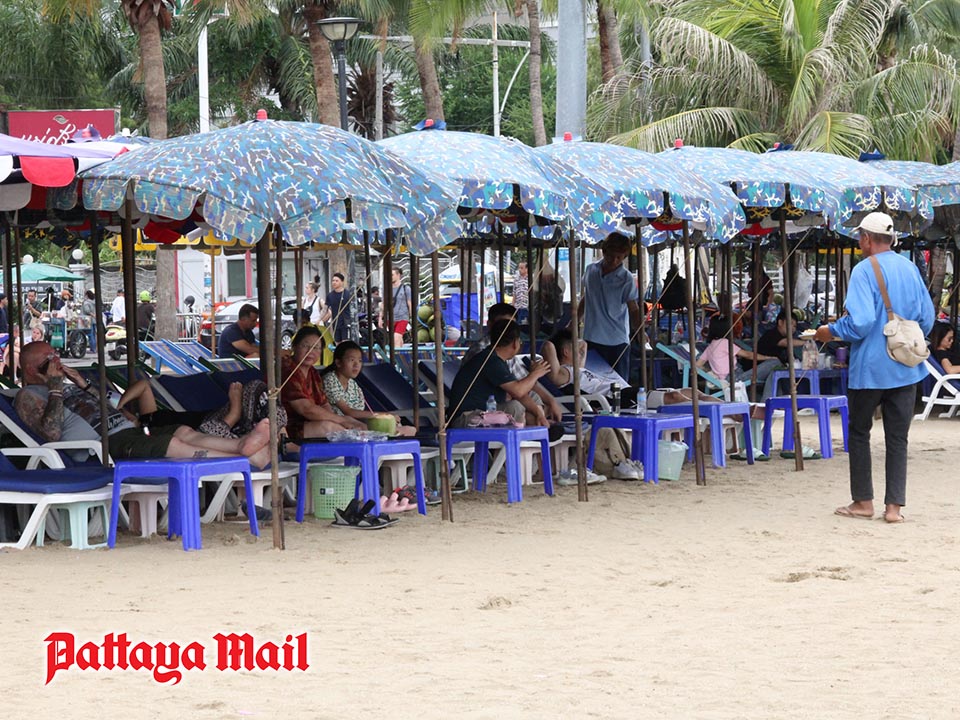 WWW.PATTAYAMAIL.COMPattaya feels economic strain as Thai-Cambodian border remains closedLocal economies reel as cross-border trade sinks; Commerce Ministry scrambles for solutions. (Photo by Jetsada Homklin) PATTAYA, Thailand – As Thailand’s Commerce Ministry warns that the extended closure of Thai-Cambodian border passes could wipe out 60 billion baht in trade and severely impact tourism, serious questions are being raised: Is the shutdown necessary, and at what cost? Meanwhile, Pattaya’s tourism sector is also feeling the heat as labor shortages begin to bite. With the Thai-Cambodian border closed, many local hotels, restaurants, and catering services report difficulty finding staff for essential roles. Cambodian workers — who have long formed the backbone of Pattaya’s hospitality and service industries — are now absent, forcing businesses to reduce services, shorten operating hours, or offer higher wages to attract replacements. Employers warn that if the situation drags on, it could severely disrupt operations during the upcoming high season. The impact goes beyond just lost revenue; many of these roles require skills and a work ethic that not every Thai worker is willing or able to provide, making the labor shortage even more challenging to overcome. According to Mrs. Arada Fuangthong, Director-General of the Department of Foreign Trade at the Ministry of Commerce, Thailand’s border trade with Cambodia grew by 11.2% in the first five months of 2025, reaching 80.7 billion baht. Thai exports contributed over 63 billion baht, while imports from Cambodia rose 20%. However, Mrs. Arada cautioned that June’s figures are expected to drop sharply, following the June 7 closure of all border crossings to people, goods, and tourists. Mrs. Arada Fuangthong, Director-General of the Department of Foreign Trade warns border closure could erase 60 billion baht in Thai exports to Cambodia. If the border remains closed until the end of the year, she warned, Thailand may lose over 60 billion baht in border export value during the second half of 2025. That would drag down total annual border trade growth to just 1.8–2%, far short of the original 3% target. “The closure will not completely derail cross-border trade with Cambodia,” she noted, citing alternative export channels like maritime shipping. Still, the hit to border regions will be severe. Shop closures, plummeting foot traffic, and lost tourism income are already affecting small merchants across key provinces. Among the most vulnerable are businesses that rely on Cambodian foot traffic — such as fruit vendors, small retailers, and border market operators. Although the Ministry is helping reroute supply chains and urging domestic consumption of perishable goods like fruits and vegetables, many say it’s not enough. Mrs. Arada acknowledged that while tapioca imports from Cambodia could be redirected to Laos (which already accounts for 60% of such imports), the economic gap left by a stalled Cambodian border will not be easily filled. She emphasized that her department is monitoring the situation daily and coordinating with customs officials and provincial trade offices to mitigate the fallout. “You can’t grow the economy with the gate shut”: experts warn against long border lockdown. Yet many in the private sector say the damage is already done. “You can’t grow the border economy with the gate shut,” one analyst said. “If safety is the concern, then manage it better — but don’t throw away half a year’s trade and tourism.” As policymakers weigh national security alongside economic health, Mrs. Arada’s team is also exploring new trade zones, digital commerce solutions, and partnerships with malls and private spaces to accommodate displaced vendors — a temporary fix at best. Ultimately, businesses on both sides of the Thai-Cambodian border are urging a more balanced approach — one that protects public welfare without sacrificing the livelihoods of thousands who rely on cross-border movement for survival.0 Comentários 0 Compartilhamentos 9 Visualizações
WWW.PATTAYAMAIL.COMPattaya feels economic strain as Thai-Cambodian border remains closedLocal economies reel as cross-border trade sinks; Commerce Ministry scrambles for solutions. (Photo by Jetsada Homklin) PATTAYA, Thailand – As Thailand’s Commerce Ministry warns that the extended closure of Thai-Cambodian border passes could wipe out 60 billion baht in trade and severely impact tourism, serious questions are being raised: Is the shutdown necessary, and at what cost? Meanwhile, Pattaya’s tourism sector is also feeling the heat as labor shortages begin to bite. With the Thai-Cambodian border closed, many local hotels, restaurants, and catering services report difficulty finding staff for essential roles. Cambodian workers — who have long formed the backbone of Pattaya’s hospitality and service industries — are now absent, forcing businesses to reduce services, shorten operating hours, or offer higher wages to attract replacements. Employers warn that if the situation drags on, it could severely disrupt operations during the upcoming high season. The impact goes beyond just lost revenue; many of these roles require skills and a work ethic that not every Thai worker is willing or able to provide, making the labor shortage even more challenging to overcome. According to Mrs. Arada Fuangthong, Director-General of the Department of Foreign Trade at the Ministry of Commerce, Thailand’s border trade with Cambodia grew by 11.2% in the first five months of 2025, reaching 80.7 billion baht. Thai exports contributed over 63 billion baht, while imports from Cambodia rose 20%. However, Mrs. Arada cautioned that June’s figures are expected to drop sharply, following the June 7 closure of all border crossings to people, goods, and tourists. Mrs. Arada Fuangthong, Director-General of the Department of Foreign Trade warns border closure could erase 60 billion baht in Thai exports to Cambodia. If the border remains closed until the end of the year, she warned, Thailand may lose over 60 billion baht in border export value during the second half of 2025. That would drag down total annual border trade growth to just 1.8–2%, far short of the original 3% target. “The closure will not completely derail cross-border trade with Cambodia,” she noted, citing alternative export channels like maritime shipping. Still, the hit to border regions will be severe. Shop closures, plummeting foot traffic, and lost tourism income are already affecting small merchants across key provinces. Among the most vulnerable are businesses that rely on Cambodian foot traffic — such as fruit vendors, small retailers, and border market operators. Although the Ministry is helping reroute supply chains and urging domestic consumption of perishable goods like fruits and vegetables, many say it’s not enough. Mrs. Arada acknowledged that while tapioca imports from Cambodia could be redirected to Laos (which already accounts for 60% of such imports), the economic gap left by a stalled Cambodian border will not be easily filled. She emphasized that her department is monitoring the situation daily and coordinating with customs officials and provincial trade offices to mitigate the fallout. “You can’t grow the economy with the gate shut”: experts warn against long border lockdown. Yet many in the private sector say the damage is already done. “You can’t grow the border economy with the gate shut,” one analyst said. “If safety is the concern, then manage it better — but don’t throw away half a year’s trade and tourism.” As policymakers weigh national security alongside economic health, Mrs. Arada’s team is also exploring new trade zones, digital commerce solutions, and partnerships with malls and private spaces to accommodate displaced vendors — a temporary fix at best. Ultimately, businesses on both sides of the Thai-Cambodian border are urging a more balanced approach — one that protects public welfare without sacrificing the livelihoods of thousands who rely on cross-border movement for survival.0 Comentários 0 Compartilhamentos 9 Visualizações -
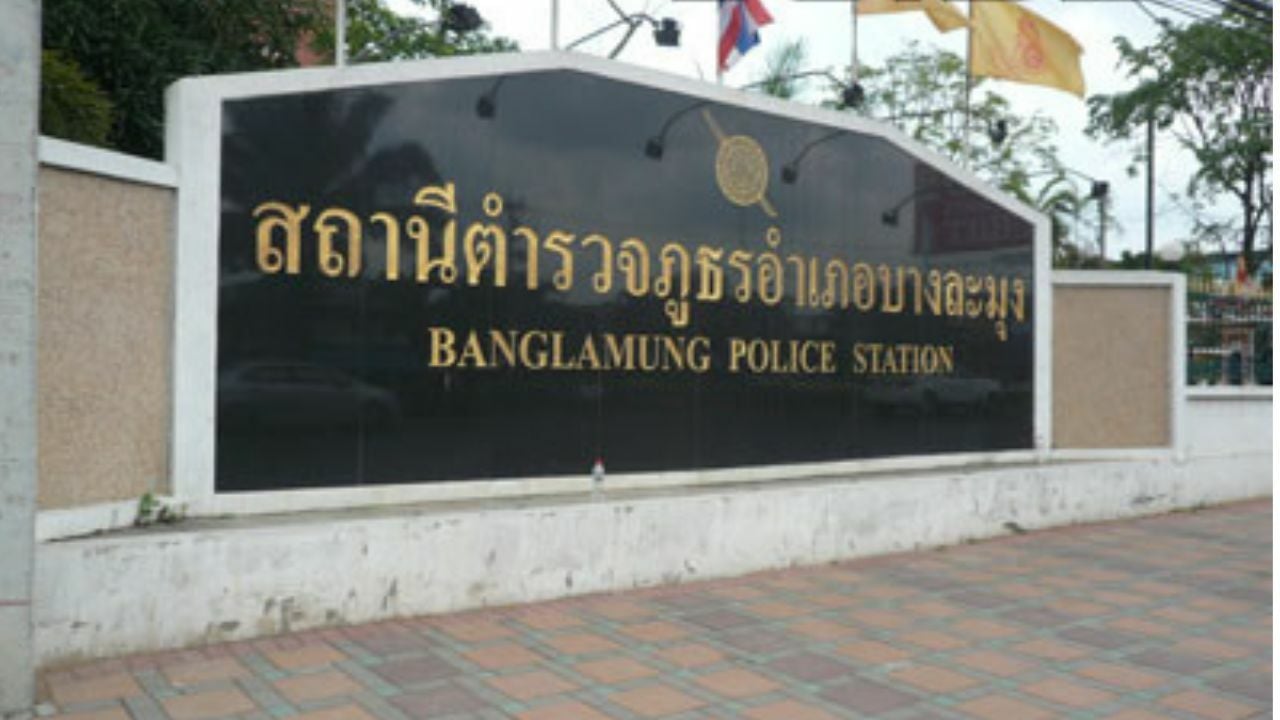 THETHAIGER.COMPattaya paint rage: Worker batters delivery lad over smudged linesPattaya paint rage: Worker batters delivery lad over smudged linesLegacy A furious road worker launched a savage attack on a young delivery rider in Pattaya yesterday because he accidentally rode over freshly painted traffic lines. The shocking assault happened at 6pm, yesterday, July 1 outside a convenience store on Soi Naklua 12, after 20 year old Phattharadanai Phimthong returned from a delivery run and was confronted by a man now identified as “Pat,” a 43 year old road marking contractor. Phattharadanai, who works for a nearby convenience store, filed an official complaint with Police Lieutenant Colonel Aphichet Metheethamphorn at Bang Lamung Police Station, demanding charges be brought against his attacker. “I didn’t argue or fight back,” the young rider said. “I know I made a mistake riding over the lines, but I didn’t see them and I was just trying to deliver water. Why didn’t he just talk to me?” Pictures courtesy of SoiDB According to the victim, the drama began around midday when he was delivering multiple packs of drinking water and unknowingly rode over wet paint being laid down by a team of road workers near the store. He said he didn’t realise what had happened until later. But when he returned from the drop-off, Pat was waiting. CCTV footage, now in police hands, shows the moment Pat blocked the road with his body, forcing the rider to stop, before flying into a violent rage, punching Phattharadanai in the face, kneeing him in the chest, and then delivering a brutal kick to the head after he collapsed to the ground. “I had blood pouring from my mouth,” the rider said. “Other workers had to pull him off me.” Phattharadanai later went to Pattaya Hospital complaining of severe chest pain and headaches. He has vowed to pursue legal action “to the fullest extent” against his attacker. Officers from Bang Lamung Police Station responded to the incident, collected statements, and are now using CCTV footage as key evidence in the case. Pat’s details have been recorded, and an investigation is under way. So far, no arrest has been reported but the victim says he won’t rest until justice is served, Pattaya News reported. “I’m just doing my job. I didn’t deserve to be beaten like that over a bit of paint.” The story Pattaya paint rage: Worker batters delivery lad over smudged lines as seen on Thaiger News.0 Comentários 0 Compartilhamentos 13 Visualizações
THETHAIGER.COMPattaya paint rage: Worker batters delivery lad over smudged linesPattaya paint rage: Worker batters delivery lad over smudged linesLegacy A furious road worker launched a savage attack on a young delivery rider in Pattaya yesterday because he accidentally rode over freshly painted traffic lines. The shocking assault happened at 6pm, yesterday, July 1 outside a convenience store on Soi Naklua 12, after 20 year old Phattharadanai Phimthong returned from a delivery run and was confronted by a man now identified as “Pat,” a 43 year old road marking contractor. Phattharadanai, who works for a nearby convenience store, filed an official complaint with Police Lieutenant Colonel Aphichet Metheethamphorn at Bang Lamung Police Station, demanding charges be brought against his attacker. “I didn’t argue or fight back,” the young rider said. “I know I made a mistake riding over the lines, but I didn’t see them and I was just trying to deliver water. Why didn’t he just talk to me?” Pictures courtesy of SoiDB According to the victim, the drama began around midday when he was delivering multiple packs of drinking water and unknowingly rode over wet paint being laid down by a team of road workers near the store. He said he didn’t realise what had happened until later. But when he returned from the drop-off, Pat was waiting. CCTV footage, now in police hands, shows the moment Pat blocked the road with his body, forcing the rider to stop, before flying into a violent rage, punching Phattharadanai in the face, kneeing him in the chest, and then delivering a brutal kick to the head after he collapsed to the ground. “I had blood pouring from my mouth,” the rider said. “Other workers had to pull him off me.” Phattharadanai later went to Pattaya Hospital complaining of severe chest pain and headaches. He has vowed to pursue legal action “to the fullest extent” against his attacker. Officers from Bang Lamung Police Station responded to the incident, collected statements, and are now using CCTV footage as key evidence in the case. Pat’s details have been recorded, and an investigation is under way. So far, no arrest has been reported but the victim says he won’t rest until justice is served, Pattaya News reported. “I’m just doing my job. I didn’t deserve to be beaten like that over a bit of paint.” The story Pattaya paint rage: Worker batters delivery lad over smudged lines as seen on Thaiger News.0 Comentários 0 Compartilhamentos 13 Visualizações
© 2025 พัทยาโซเชียล Pattaya.Social
 Portuguese
Portuguese



